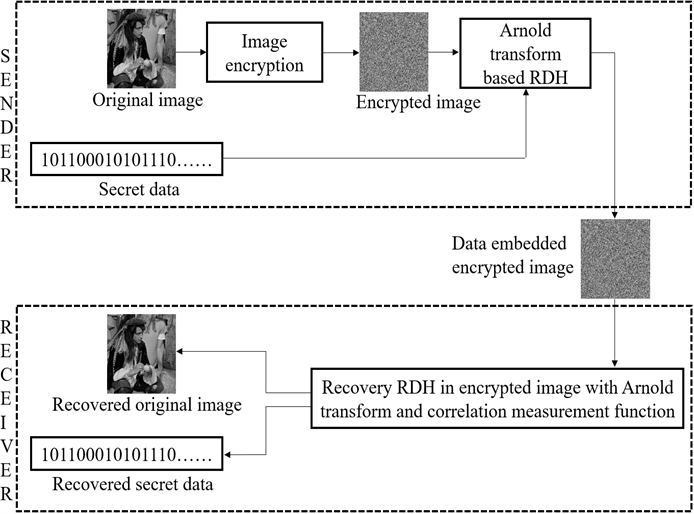The structure of human society is always profoundly affected by the developments happening in the domain of communication. Data security and privacy have always been a concern in the ongoing communication revolution. The Department of Computer Science and Engineering is glad to inform you that the paper, “An Efficient Spatial Transformation-based Entropy Retained Reversible Data Hiding Scheme in Encrypted Images,” has been published by Dr V M Manikandan, Assistant Professor, and his PhD student Mr Shaiju Panchikkil in “Optik Journal” with an impact factor of 2.443.
Abstract of the research
A critical issue with the current communication revolution is data security and privacy, which is an inevitable part of trustworthiness in the communication system. Hence, the applicability of the Reversible Data Hiding schemes (RDH) in this scenario is encouraging and critical, like medical image communication, satellite image transmission, etc. Earlier, we explored Arnold transform in one of our previous works to hide the secret data that uses the Convolutional Neural Network (CNN) model to design a complete RDH scheme. The proposed scheme follows a statistical approach to support recovering the cover image and the embedded information. This approach proves advantageous over the previous work following its computational capability. The scheme designed can retain the entropy of the encrypted images even after embedding the additional information, complementing the security of the encryption algorithm.
Explanation of the research
 The research focuses on hiding information in an encrypted image and transmitting it to the receiver. Earlier, the researchers used the Arnold transform-based image scrambling algorithm to facilitate the data hiding. But at the receiver end, they have used a convolutional neural network model, which acts as a binary classifier to recover the image properly after extracting the hidden information. The researchers had a few overheads over there, like training the model and then sharing the same with the receiver to recover the original image efficiently. To overcome these overheads, they analysed the correlation of neighboring pixels and introduced a statistical measure at the receiver end to recover the exact image.
The research focuses on hiding information in an encrypted image and transmitting it to the receiver. Earlier, the researchers used the Arnold transform-based image scrambling algorithm to facilitate the data hiding. But at the receiver end, they have used a convolutional neural network model, which acts as a binary classifier to recover the image properly after extracting the hidden information. The researchers had a few overheads over there, like training the model and then sharing the same with the receiver to recover the original image efficiently. To overcome these overheads, they analysed the correlation of neighboring pixels and introduced a statistical measure at the receiver end to recover the exact image.
Social implications of the research
One of the various social implications of the research is an application concerning patient treatment. In a general scenario, during the covid 19 pandemic, people make an online consultation with the doctor by uploading their medical images. If the doctor wants to take a specialist’s opinion, he should send this image and the diagnosis report via a communication medium. The research team’s approach is meaningful in this aspect. The original image is initially encrypted, which makes it unreadable. The diagnosis report information is hidden over the encrypted image. Hence the doctor needs to send only a single file to the specialist. It is also difficult for an external agent or an unauthorized party to decode the report and the image as it is encrypted. Now it is essential to regain the original quality of the recovered image, as any degradation in the quality of the recovered image can lead to a wrong diagnosis. Hence, they have designed the recovery module carefully to extract all the hidden information and recover the original image without compromising its quality.
The researchers are in constant collaboration with Professor Yu-Dong Zhang from the University of Leicester, University Road, Leicester, LE1 7RH, UK, to introduce new strategies to elevate the embedding capacity from the current level without negotiating the quality of the recovered image.

